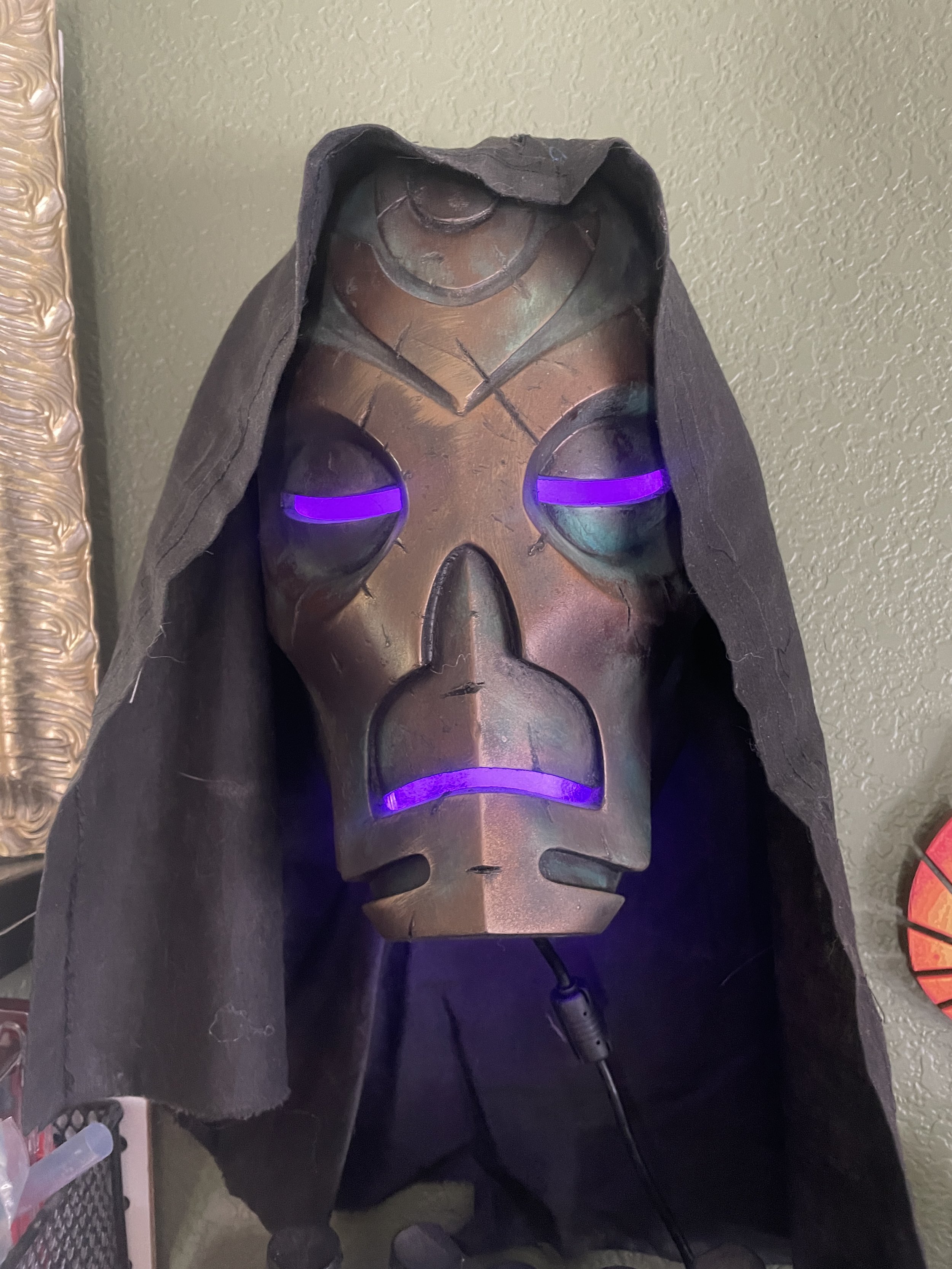This illuminated iron flask sits patiently in our gaming room, waiting for some low-wisdom derp to throw it. Photo by Monica Jones
See what I did there? The headline is funny because in Baldur’s Gate 3, when you throw the iron flask, a spectator breaks free to show you what chaotic neutral is all about.
Oh shut up. I’m hilarious.
Anyway, Devon 3D-printed this iron flask, designed by Mark Pedersen, as a prop for our gaming room. He modified the original design to make the bottom detachable and added electronics for just a touch of menace.
Also, we know spectators are lawful neutral. It was just a stupid joke.
Supplies
For the body: Protopasta Stainless Steel Filled PLA 3D Printer Filament
For the eyes and mouth: Clear red SUNLU 3D Printer Filament
Sandpaper in multiple grits
Note: Devon sanded the body using 400-, 800-, 1000-, 2000- and 3000-grit sandpaper, in that order, to achieve a realistic metallic finish.
Instructions for electronics
The seed pixels (the LEDs) have three wires. The marked one is for voltage, which gets soldered to the 5v hole on the ESP. The next one is for signal. I soldered that to D4. The final wire is for ground, and that one gets soldered to G.
Cut as much wire as you need for your project. We recommend using no more than 30 LEDs on an ESP board.
Next, install WLED on the board. You’ll need to install the drivers first. Then plug in WLED and follow their setup instructions. Your config should look something like this.
Masterwork Tools is an Amazon Affiliate. We earn a small commission on qualifying purchases.



